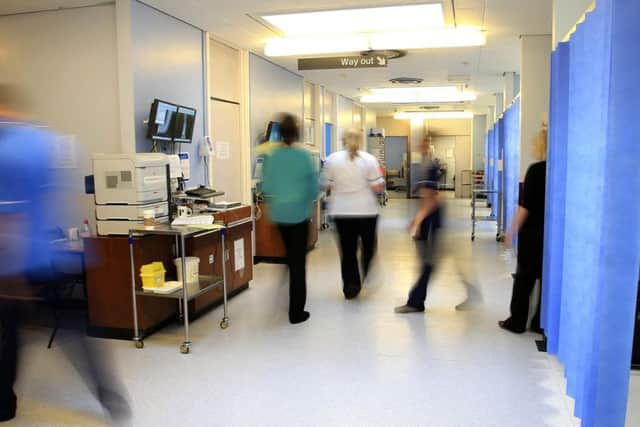32,000 people in England attended A&E 10 times or more in one year - including 10 who went '235 times each'
Almost 32,000 people attended A&E in England 10 or more times between June 2017 and May last year, according to a report on NHS hospital data, published today by healthcare analysis company Dr Foster.
The group of so-called high-intensity users (HIUs) attended emergency departments 522,312 times between, the equivalent of about 16 times each during the 12-month period.
Advertisement
Hide AdAdvertisement
Hide AdAnd 10 patients visited A&E more than 235 times each, including some who attended on average in excess of once a day, the report also found.


Dr Foster’s analysis of NHS Digital’s hospital episode statistics focused on high-intensity users, who are defined as patients who visit A&E 10 or more times in 12 months.
The report warned frequent A&E attenders were increasing risk of “overcrowding” in emergency departments. It uncovered that just 0.4 per cent of patients made up four per cent of all A&E attendances, who it suggested was receiving a “significant allocation of NHS resources” compared to the average population.
The report said that, in 2016, patients who attended more than 20 times in 12 months accounted for 0.05 per cent of A&E visitors – but cost the NHS £53m.
Advertisement
Hide AdAdvertisement
Hide AdIt warned that it had put more pressure on NHS services and contributed to the rising cost of healthcare, but also suggested the group of patient’s needs was not being met.
Increased 'risk of overcrowding'
The report added: “As well as generating high healthcare costs, HIUs also increase the risk of overcrowding in emergency departments, affecting the safety and care that can be offered to other patients.
“This relatively small proportion of patients can, therefore, have a significant impact on limited NHS resources and, as such, presents an opportunity to reduce the strain on emergency services.
“It is also important to understand why high intensity users are visiting A&E so frequently, their needs are potentially not being addressed elsewhere in the system one way or another, whatever the root cause of their visits.”
Advertisement
Hide AdAdvertisement
Hide AdResearchers found that about high intensity users are more likely to live in more deprived areas, be aged 21 to 31, and to visit A&E at night.
The most common condition they are admitted to hospital with is chronic obstructive pulmonary disease, but also chest and abdominal pain, poisoning by drugs, medications and psychotropic agents and alcohol-related disorders.
The new report sets out a number of ideas to improve support for high intensity attenders, including A&Es and paramedics working together to identify them and their reasons for attending –and then providing more targeted and integrated support in order to help them manage their own health better in the community.
Meanwhile, it has also called on the Government to invest more money in public health programmes, to support the physical and mental health of younger people, particularly with issues surrounding alcohol and drug misuse.
Advertisement
Hide AdAdvertisement
Hide AdNHS Programme reduced A&E visits by 90 per cent to save £2m
An NHS England spokesman said a RightCare High Intensity User programme was being rolled out across more of the country following a successful trial in Blackpool that reduced A&E visits by 90 per cent and saved the NHS more than £2m.
He said: “The NHS long-term plan sets out a range of options for people to get urgent and emergency care outside A&E, including NHS 111 online and seven day crisis care for mental ill health.”
The spokesman added that it was “precisely the sort of supportive and positive action that is improving patient care while reducing pressure on services the NHS”.